Asphalt will deteriorate almost quickly, causing road distresses to appear, regardless of how well a road is designed. Traffic, dampness, and a lack of preventive maintenance treatment are all factors that speed up the deterioration of a road. Depending on the method used, mending a pothole on the road might be simple or complex. In some circumstances, dumping a mixture into a pothole, compacting it with a shovel, and turning away is a simple procedure. In other cases, pulverizing the pothole and laying down new pavement may be necessary. The sort of asphalt repair procedure required is determined by the nature and severity of the damages to an asphalt road. It is important to note that the longer it is taken to repair damaged asphalt, the worse the damage will become. Extensive damage is also more expensive since it necessitates more difficult repair methods, including removal, replacement, or resurfacing. As a general guideline, it is essential to inspect asphalt road for damage once a week or once a month, depending on how much traffic it receives. Parking lots with a lot of traffic will undoubtedly require more upkeep than those with less traffic. Thus, it is necessary to implement procedures as per the hole sizes along with their nature.
Methods of Repairing
Some of the methods of repairing asphalt roads are –
Sealing with a coating – Sealcoating your asphalt not only restores its beauty but also forms a barrier that protects it from the elements and a waterproof film that prevents moisture from leaking into the foundation. Cracks of a width of 1/8 inch (3 millimeters) or less are too small to be successfully sealed. A surface seal, such as a fog seal, chip seal, slurry seal, or sand seal, should be utilized if numerous hairline fractures occur across a big area. The surface seal needs to be fluid enough to flow into all of the hairline cracks. Adhesion or bonding is required for asphalt crack closing products. They must be pliable and also resisting softening. They must be simple to apply while also being resistant to cracking, aging, and weathering. They must also be suitable for use on the asphalt surface. Crack filling materials include asphalt emulsions, asphalt cement, and fiberized asphalt. Asphalt rubber, rubberized asphalt, low-modulus rubberized asphalt, and self-leveling silicone are all crack sealing materials.
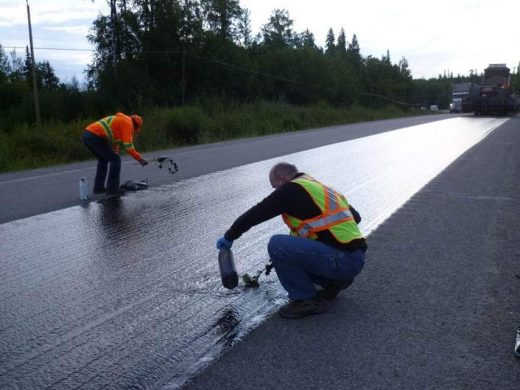
Fig 1: Sealcoating
Courtesy: TranBC
Patching – Filling potholes or excavated places in the asphalt pavement is known as patching. To avoid further degradation and costly pavement repairs, potholes and other pavement disintegration should be fixed as soon as feasible. Water can infiltrate the subgrade and create more significant pavement failures if not patched promptly. Hot mix asphalt, asphalt emulsion mixes, stockpile patching mixes, and proprietary patching mixes with unique blends of aggregate and modified binders are all options for patching. Damages that are one to two inches deep are only suggested for surface mending. It’s also vital to remember that this is simply a temporary solution. Surface asphalt patching lasts around two years on average (depending on usage, weather conditions, and other factors) and should be checked regularly.
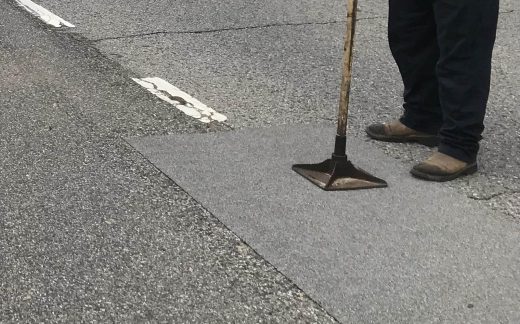
Fig 2: Road patching
Courtesy: Saint Gobain ADFORS
Full Depth Repair-Full-depth roadway pothole replacement is the most efficient method of road pothole repair. While it is a problematic form of pothole repair, it is highly effective. On the other hand, this task should be left to a professional who understands what they’re doing. It resurfaces worn-out asphalt with old asphalt. The old asphalt is pulverized and mixed with water and cement in this way. It’s then compacted to form a foundation for concrete or asphalt. This type of pothole treatment involves eliminating the entire pothole and replacing it with new pavement. This procedure is usually reserved for circumstances where the damage is so severe that it extends far beneath the asphalt pavement’s surface. Concentrated asphalt deterioration, such as cracking, pavement failure, and significant distress, can result in many problems, including enormous potholes and crumbling all over the place. The damage in some instances is so severe that it extends down to the pavement’s foundation—the stone base. It’s nearly impossible to fix something once it’s been destroyed while it’s still in the ground. Hence, the entire foundation must be dug out, reformulated with a stronger aggregate, and then reapplied before the asphalt aggregate on top can be replaced.
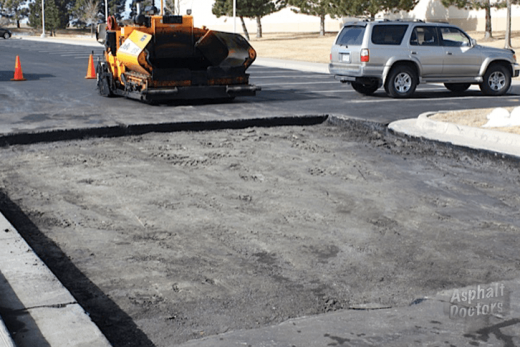
Fig 3: Full-depth road repairs
Courtesy: Asphalt Doctors
Cold Method – This technique entails gradually laying a cold-lay material into the pothole. Every time a layer is applied, it is compacted down with one’s hand or a compactor, resulting in a new, durable surface. The advantage of this pothole backfilling approach is that cars can drive over the pothole right after the job is finished.
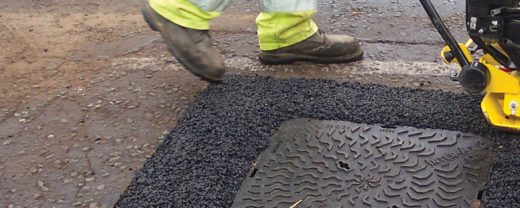
Fig 4: Cold asphalt
Courtesy: Nuroil
Throw and Roll Method-This is the most basic way of pothole repair. It’s as easy as putting asphalt patch materials into a pothole and driving over it with a tractor, bulldozer, or huge truck. With a stiff brush, the throw-and-roll procedure cleans the debris and water out of the pothole, fills it with asphalt material, and compacts it, leaving a 1/8 or 14-inch crown. While the throw-and-roll approach gives temporary pothole relief, it only repairs a pothole for a short period. It also has a high rate of failure. It’s only utilized when there aren’t any other options.
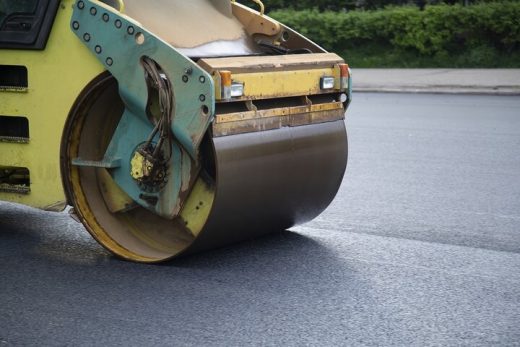
Fig 5: Rolling repair
Courtesy: Boldface News
Resurfacing – Contractors will remove all of the asphalt during this procedure and crush it down into fine gravel-like pieces so that it may be utilized to produce a new, stronger aggregate. Asphalt that cannot be used to repair some property will be returned to a processing factory and recycled in other construction materials. This is how the asphalt industry manages to be environmentally friendly and have a low carbon footprint.
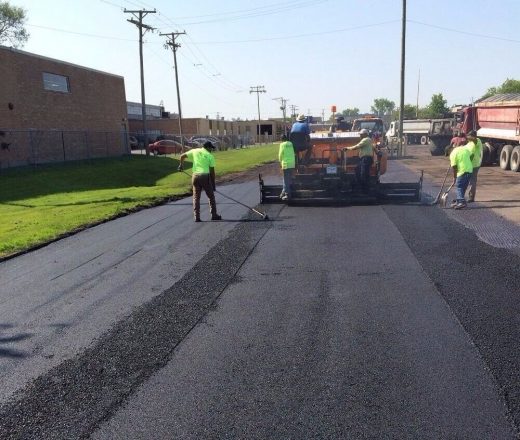
Fig 6: Road resurfacing
Courtesy: DynaCoat Inc.
Conclusion
There are various other methods of repairing roads that can be implemented for better and faster outcomes. Cracking, severe deformation, distress in roads are some of the causes behind the damage of roads. Learning about these causes and repairs will help facilitate better construction activities and result in an extended life span of roads.
References
- Asphalt Kingdom, “4 Categories of Asphalt Damage and 4 of Our Most Effective Repair Methods”- https://blog.asphaltkingdom.com/asphalt-damage-repair-methods
- Revivers, “Most Common Road Repairs”- http://www.abetterroadahead.com/most-common-road-repairs.html
- Asphalt Magazine, “Preventing and repairing potholes and pavement cracks”- http://asphaltmagazine.com/preventing-and-repairing-potholes-and-pavement-cracks/
- Psymbolic, “8 Different Types of Pothole Repair Methods”- https://www.psymbolic.com/8-different-types-of-pothole-repair-methods/
- Sure-Seal, “What Are the Different Types of Asphalt Repair Techniques?”- https://suresealpavement.com/what-are-the-different-types-of-asphalt-repair-techniques/
If you have a query, you can ask a question here.



good notes and well summarised
well informed sections